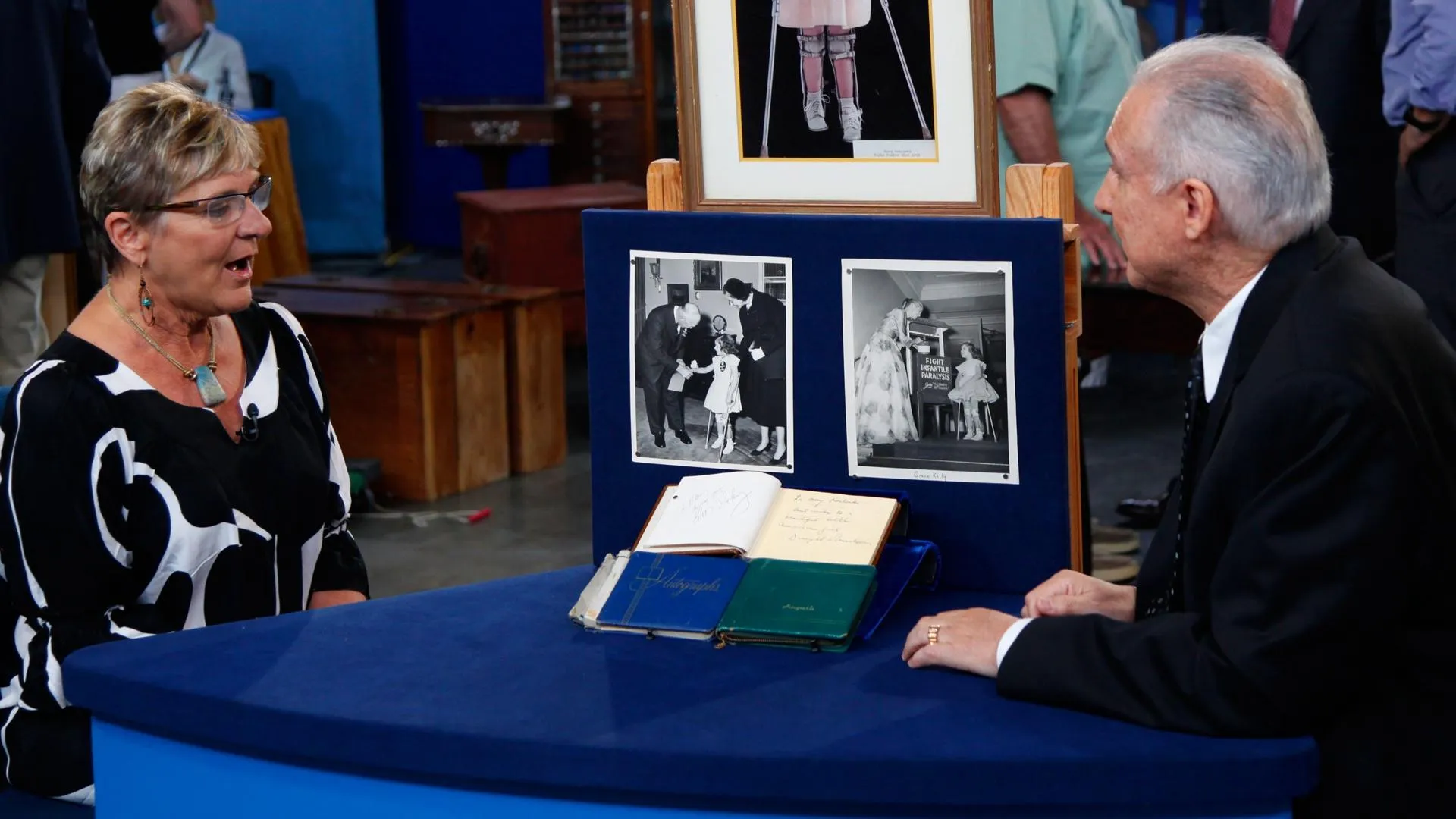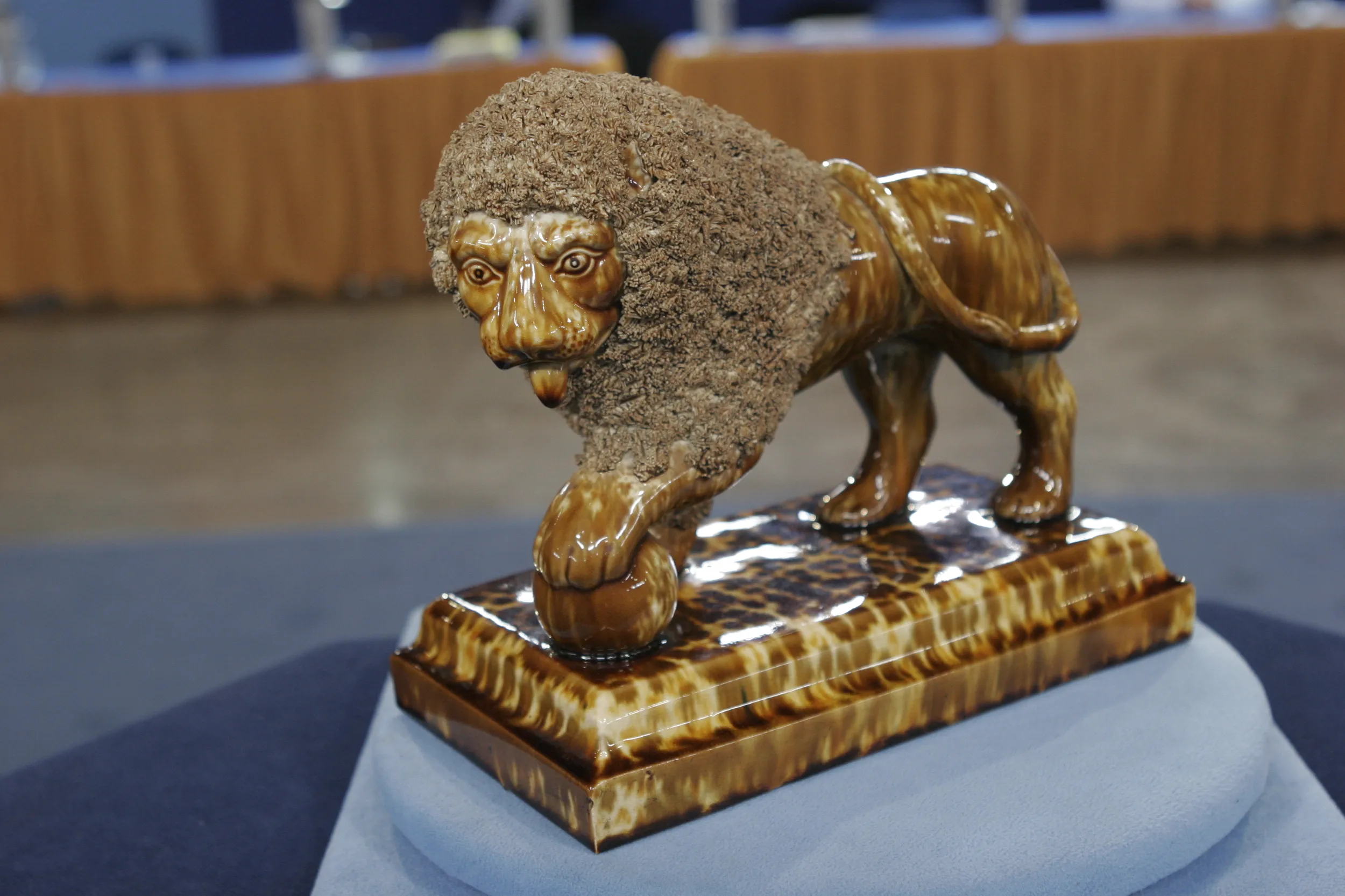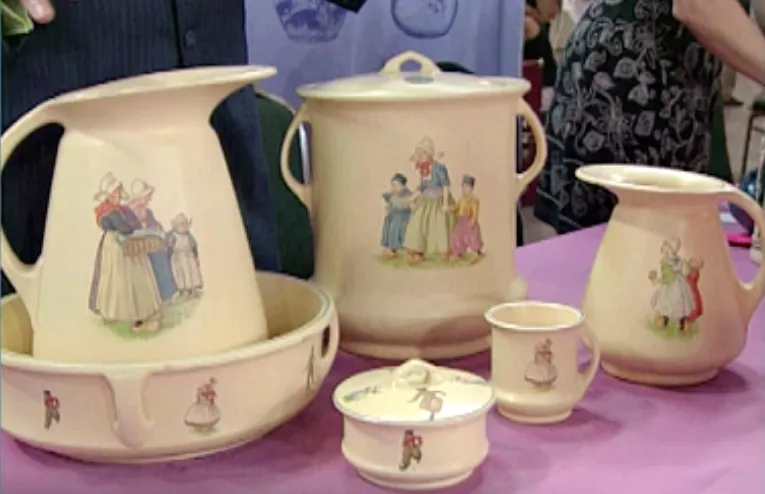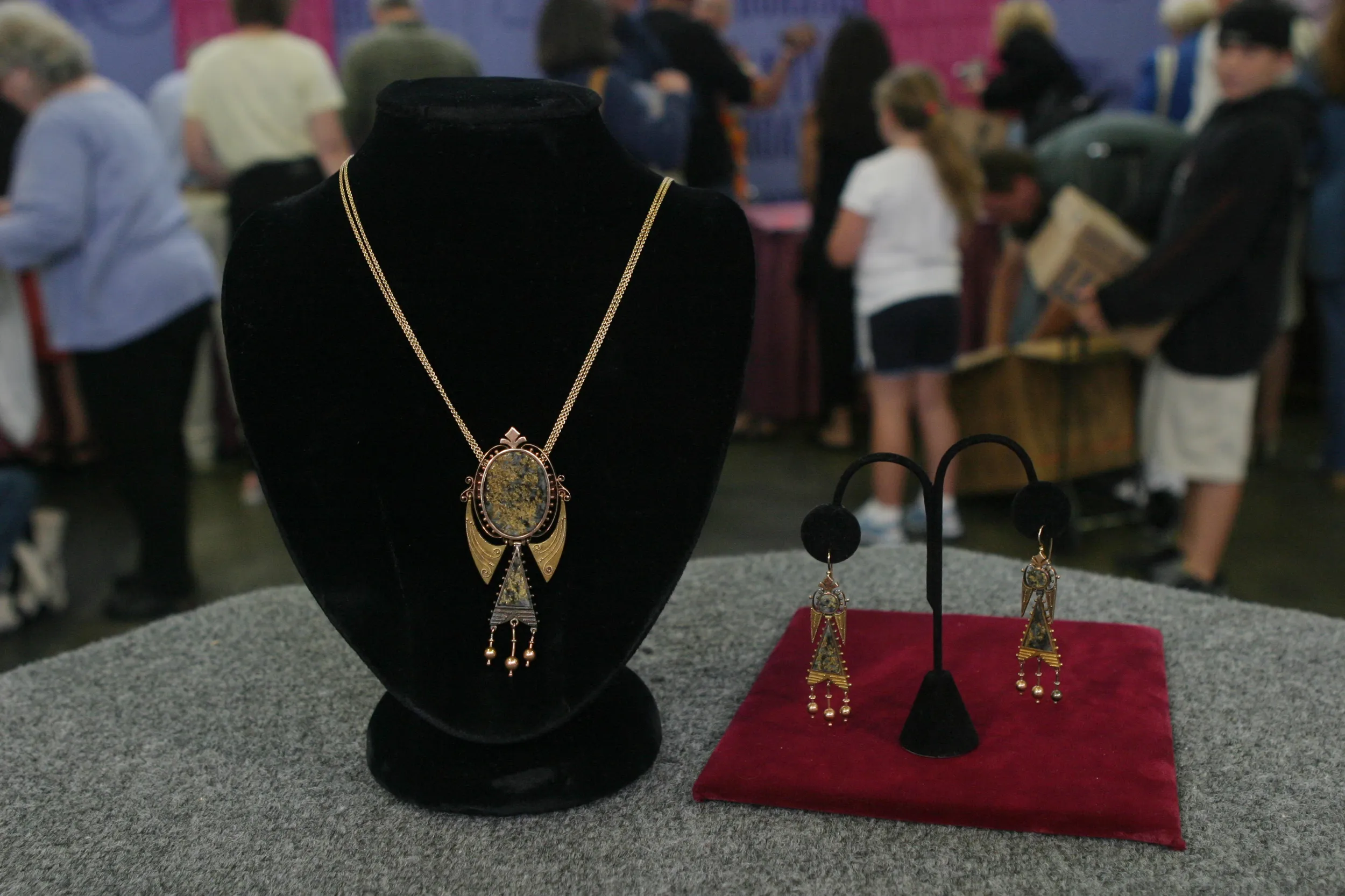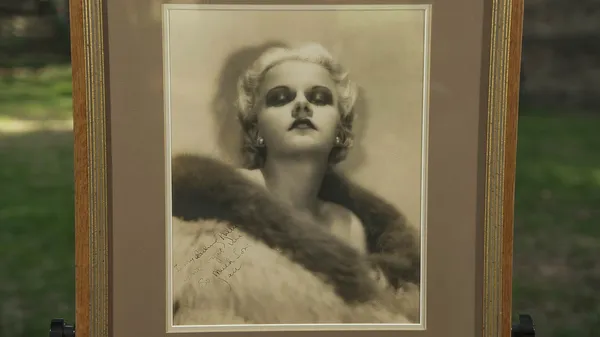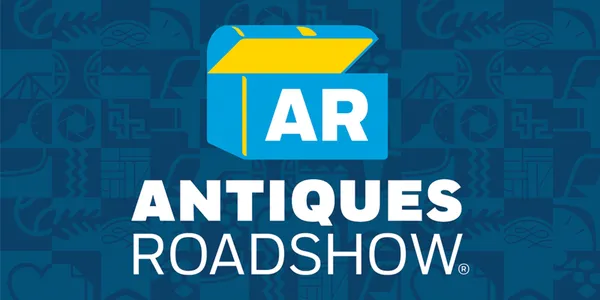GUEST: It was my grandmother's, and they called it a doll. She said that it was her great-grandmother's doll. My great-great-great-grandmother lived in North Carolina, but at some point, they traveled out to Missouri and then came back to North Carolina. And that's really all the history I have on the doll.
APPRAISER: And where in North Carolina were they from?
GUEST: Winston-Salem.
APPRAISER: That's a great little heirloom, and what do you do with it now?
GUEST: Dust it.
APPRAISER: Yeah?
GUEST: That's about it.
APPRAISER: Yeah? And the story is that your grandmother used this as a toy?
GUEST: She played with it.
APPRAISER: Wow.
GUEST: She played with it, and we don't know why there's a hole in the head. I don't know if there used to be another type of hair coming out or what, but...
APPRAISER: Okay. When you told me that your family was from Winston-Salem, that was one of the clues to help me identify this little flask.
GUEST: Okay.
APPRAISER: And...
GUEST: Oh, you're...
APPRAISER: This is a very rare bottle.
GUEST: Ooh.
APPRAISER: It was made by Moravian potters.
GUEST: Right.
APPRAISER: In Salem, North Carolina. Salem was the center of Southern pottery making. The industry began there in the mid-18th century. But this style of bottle was made in the first couple of decades of the 19th century.
GUEST: Okay.
APPRAISER: This was probably made 1810 to 1830.
GUEST: Wow, wow.
APPRAISER: Whether they were used for spirits or whatever, but the hole...
GUEST: Right.
APPRAISER: ...is where a cork was.
GUEST: Okay.
APPRAISER: So it was not a doll. (laughs)
GUEST: Oh... (laughs) Okay.
APPRAISER: It was actually used to store liquid in. The Moravian potters of Salem, or what's commonly known today as Old Salem...
GUEST: Right.
APPRAISER: ...made a number of forms like this.
GUEST: Uh-huh.
APPRAISER: They made a squirrel holding a nut, a fish, a turtle.
GUEST: Right.
APPRAISER: The doll is probably the one you see more often than anything.
GUEST: Mm-hmm.
APPRAISER: The necklace somebody added.
GUEST: Yes, I think my grandmother did that.
APPRAISER: Somebody... Your...
GUEST: She was very handy.
APPRAISER: And although it's really hard to see when you look at her crossed hands, she's holding a little bouquet of flowers. When you look at the side... See the mark here? The little, the vertical mark here?
GUEST: Yeah, uh-huh.
APPRAISER: This was made in a mold, in a pressed mold.
GUEST: Okay.
APPRAISER: So the clay was put together, then they pushed the mold together to make it. It was not a hand-thrown bottle, it was a mold-made flask. These are very collectible and very desirable.
GUEST: Ooh...
APPRAISER: Have you ever had anybody look at it and say, "Hey, I'd like to buy that from you" or anything?
GUEST: No, uh-uh.
APPRAISER: This flask would sell at auction for between $15,000 and $25,000.
GUEST: (inhales sharply) That's amazing-- God! So I'll, I'll keep on dusting it. Maybe I'll put it away so it doesn't get dusted.
APPRAISER: (chuckles)

